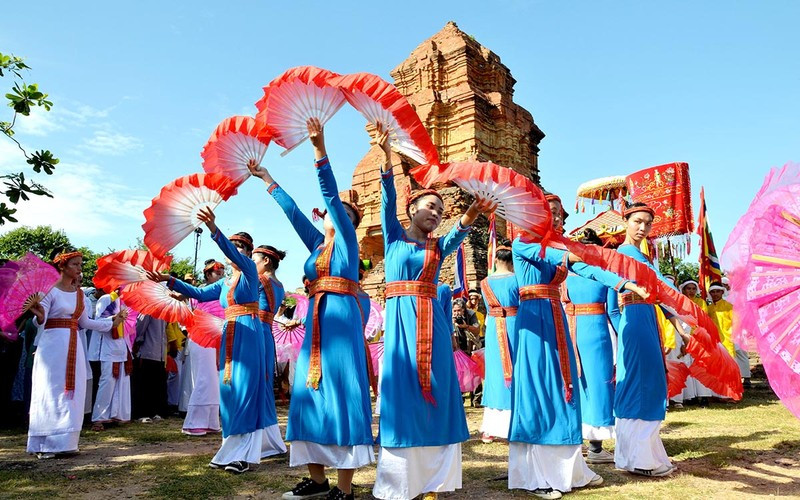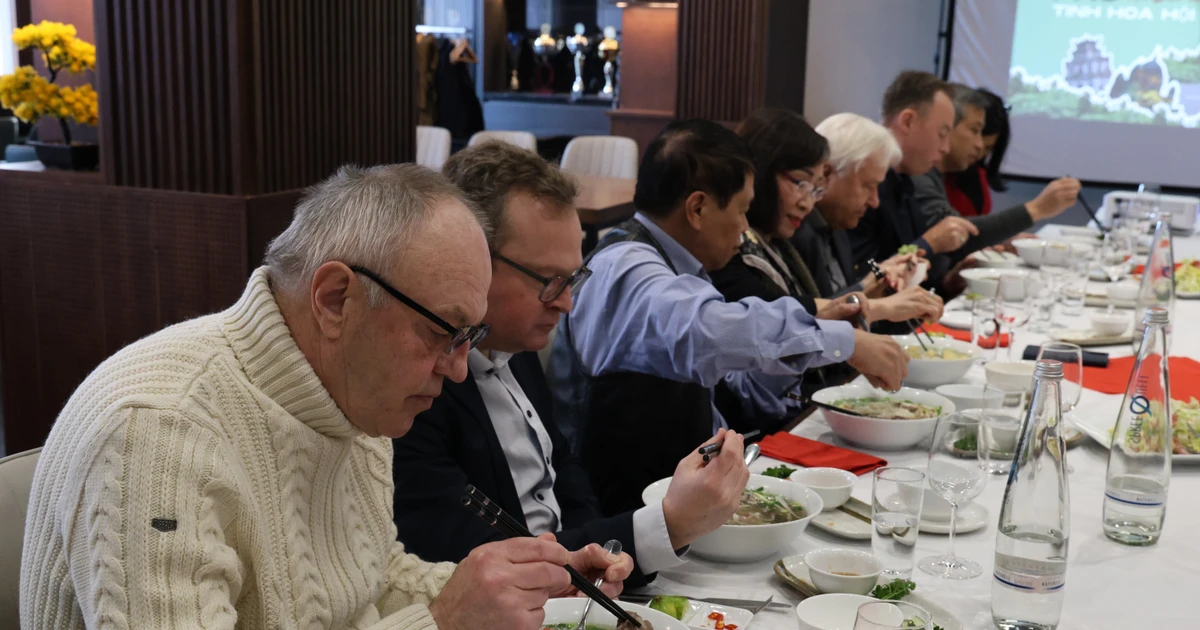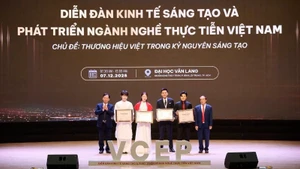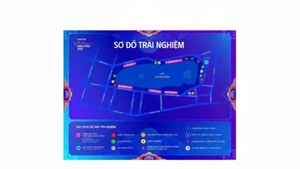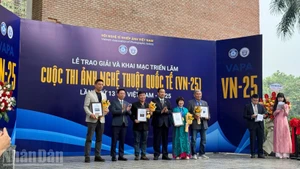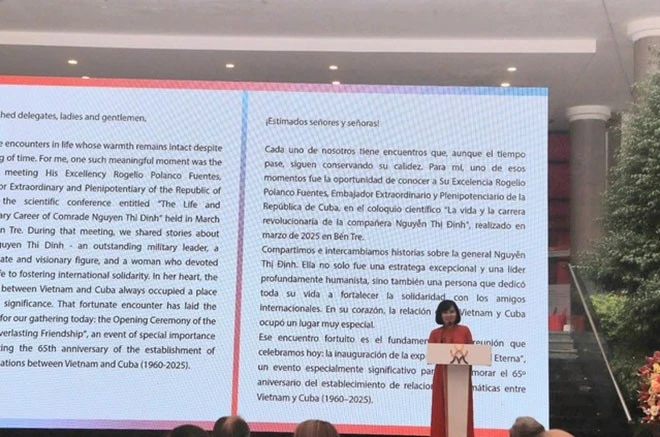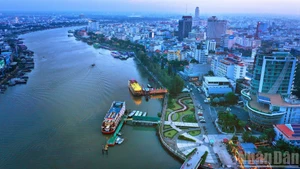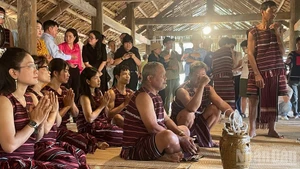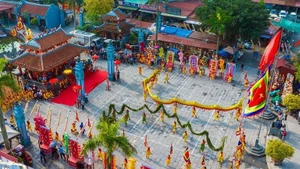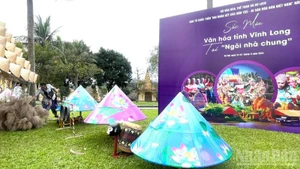Diverse and rich cultural identity
Many heritages in the south-central region have been named in the list of national intangible cultural heritagess. These heritages meet the criteria of representing the identity of the community and locality, reflecting cultural diversity and human creativity, being handed down through generations, and they are protected by the community.
Kate festival of the Cham people in Ninh Thuan province is held annually on the first day of the seventh month, according to the Cham ethnic calendar. It is observed across temples, villages and families in the province.
The Kate festival is the oldest and most unique folk festival of the Cham ethnic minority people in Binh Thuan Province, aiming to respect the gods and pray for favourable weather and crops.
Taking place every year from the 20th to the 23rd of the third lunar month, at Ponagar Temple on Cu Lao hill, in Vinh Phuoc ward, Nha Trang city, Khanh Hoa province, Ponagar Temple festival commemorates the Goddess Yang Po Inu Nagar - the Holy Mother of the Cham community in the Southern Central region.
The festival attracts thousands of participants, not only the Cham people in Ninh Thuan and Binh Thuan but also visitors from across the country. It is a symbol of great national unity, contributing to the cohesion of the Vietnamese ethnic groups in the south-central region.
Visiting Xi Thoai village, Xuan Lanh commune, Dong Xuan district, Phu Yen province, visitors can hear the sound of drums and gongs – which are traditional musical instruments of the Cham H'Roi and Bahnar ethnic people.
At the marriage proposal ceremony, the sound of the instruments reminds the couple to love each other passionately and faithfully. Meanwhile, in village activities, they bring people together, spreading joy and happiness to everyone. At funerals, they share grief with the dead’s family.
One of the notable cultural values of ethnic minorities in Binh Thuan is the pottery-making art of the Cham ethnic people in Binh Duc village, Phan Hiep commune, Bac Binh district.
The pottery products of the Cham people are mainly household utensils and worshipping items such as jars, pots, trays, and vases. As Cham ethnic group features a matrilineal society, the craft used to be passed down from mother to daughter.
Cultural flows through generations
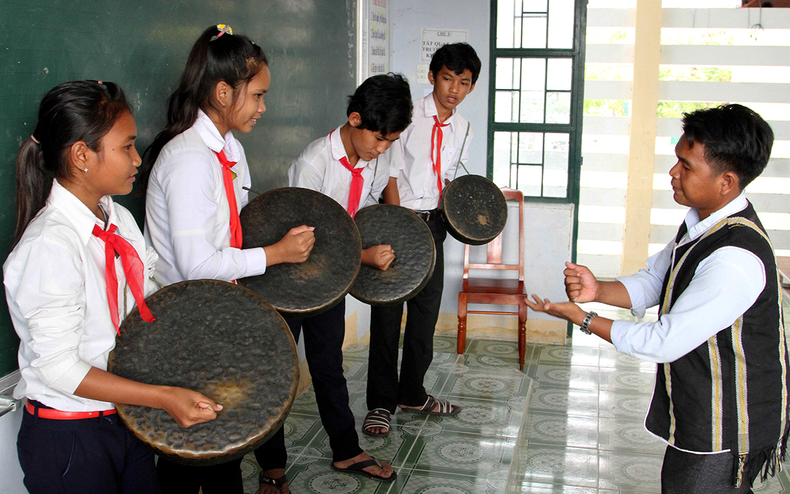 |
| An artisan teaches Raglai ethnic students how to play the gongs (Photo: Nguyen Trung) |
Deputy Director of the Quang Ngai provincial Department of Culture, Sports and Tourism Bui Van Tien, said that by supporting the teaching of traditional brocade weaving, many Hre ethnic girls in Teng village in Ba To district now can make brocade costumes by themselves. Their products are designed to be more adaptive to modern life but still imbued with the quintessence of their traditional culture, thus they are marketable and gain many interests from customers, thus helping to improve the income of local people.
On November 29, 2022, UNESCO inscribed "The art of pottery making of the Cham people" onto the List of Intangible Cultural Heritage in Need of Urgent Safeguarding. This is good news for the Cham people, especially those in Binh Duc pottery village, Binh Thuan province.
In Vinh Thanh district, Binh Dinh province, the ceremony to welcome the God of Rice, is held when Bahmar people enter the harvest season. The villagers give offerings to the gods, play gongs, dance and sing together, and pray for good health, favourable weather, and bumper crops.
Director of the Centre for Culture, Information and Sports of Vinh Thanh district, Vo Thi Hong Lien, stressed the need to preserve and promote cultural values since the development of community-based tourism in an area is always closely linked with the traditional culture there.
Travelling to Nam Giang district, Quang Nam province, visitors can explore the architecture of the traditional Guol house of the Co Tu ethnic people. The house is a cultural symbol, a sacred place, where the gods, ancestors and people live. The building of each Guol house is contributed by all people in the village. Under the roof of the house, people must always unite, protect, love and help each other in all circumstances.
These values have great significance in connecting the community and preserving the cultural identity of the Co Tu ethnic group.
It is difficult to mention all the cultural features of the ethnic minorities in the south-central region. Traditional festivals, social practices and beliefs, and folk performing arts of ethnic minorities in the region, not only meet the needs of local people but have also effectively contributed to the socio-economic development in the region and created cultural diversity of Vietnamese ethnic groups.
